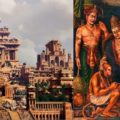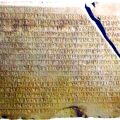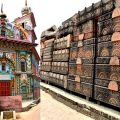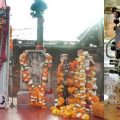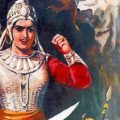Why ‘Shri Ram’ Is Known as ‘Ram Raja’ in Orchha?
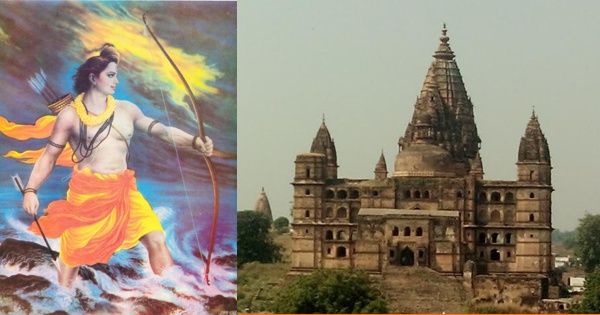
Shri Ram is worshipped here not as God but as King. Orchha in Tikamgarh district of Madhya Pradesh is the only place in the world where Lord Ram is addressed as Ram Raja. It is also the only place in the world where state police officially salutes a deity. Madhya Pradesh police here gives gun salute to Ram Raja.
An altogether different milieu will surprise you every now and then, as you explore the streets of the small holy town of Orchha. Names of most of the signboards, billboards, shops, etc. start with ‘Ram Raja’.
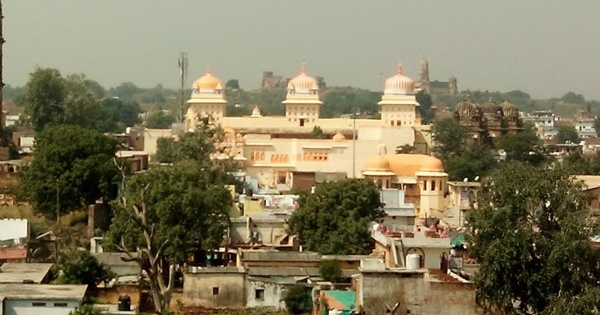
Ram Raja Temple
There is an interesting story behind the concept, dating back to the mid sixteenth century, some 440 years ago. Orchha was then ruled by the Bundela Rajputs. The principality was founded by Rudra Pratap Singh in 1501 AD. The incident is related to Madhukar Shah and his queen Ganeshkuwar. Madhukar Shah ruled Orchha from 1554 AD.
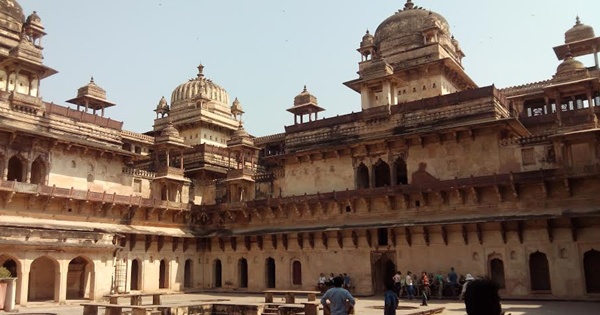
Orchha Fort
Madhukar Shah was a devotee of Lord Vishnu. Rani Ganeshkuwar was a devotee of Lord Ram. While the king of Orchha believed in the 10 incarnations of Vishnu, the queen did not. For the king, Vishnu was Ram. For the queen, Vishnu was another God. For her, Lord Ram was the Supreme Being. She worshipped only Ram and believed in no other Gods.
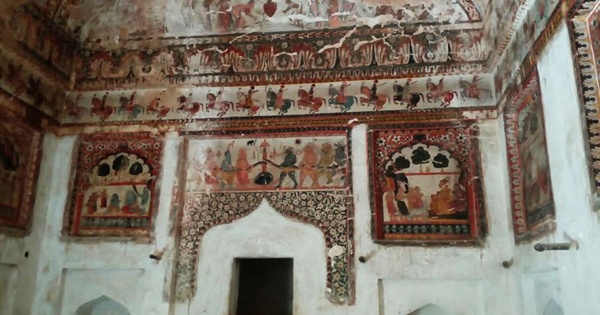
Many a time, almost everyday, the king and the queen debated on this issue. The queen was adamant in her faith and stuck to her belief. All efforts of the king of Orchha in trying to explain her failed.
To prove his point, the king decorated the walls of his chamber and the queen’s chamber with paintings in the walls and ceilings that depict the 10 incarnations of Lord Vishnu. But this effort failed too.

One day, the king decided to go along with his queen and a group of his subjects from Orchha to Mathura and Vrindavan to visit Lord Krishna’s shrine. The queen flatly refused. She said for a pilgrimage she would prefer to visit Ayodhya only, the place where Ram was born and where he ruled. A debate ensued between the king and the queen with the former trying to enlighten that Ram and Krishna were one. The queen remained adamant. She refused to go to Mathura and Vrindavan.
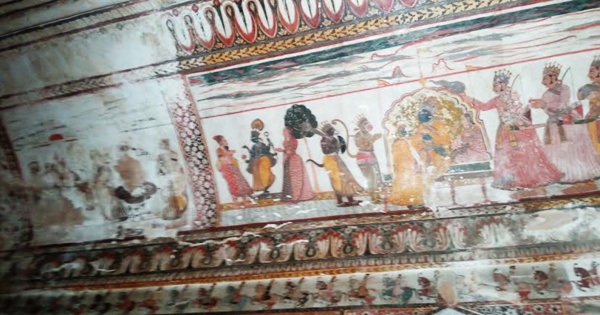
Aghast and fed up of further elucidating, an angry Madhukar Shah asked Ganeshkuwar to leave Orchha. He asked her to go to Ayodhya, the place where her ‘Ram’ rested. He threatened her not to come back unless she brought Ram along with her to Orchha.
Following the king’s orders, Ganeshkuwar left Orchha for Ayodhya. At Ayodhya, she started doing penance, invoking Lord Ram to appear before her. Her penance continued for 12 long years. Ram did not come into sight.
Frustrated, the queen decided to end her life. She jumped into the river Sarayu. A toddler suddenly appeared from nowhere in the river and placed himself in Ganeshkuwar’s arms. “I am Ram,” said the toddler. The elated queen, with tears in her eyes, held the toddler in a tight embrace. She swam to the banks, holding him. His bluish complexion and the deep waters not affecting him made her believe that he was Ram.
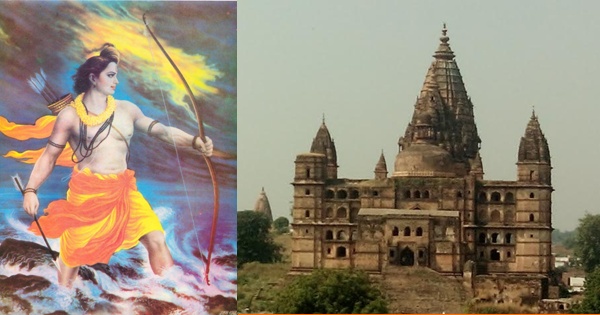
Rani Ganeshkuwar begged Ram to accompany her to Orchha. Ram agreed on three conditions:
1. He would turn into an idol. The Rani would always carry him in her arms, walking all the way to Orchha from Ayodhya. She could walk towards her destination only on Pushya Nakshatra, the 8th lunar mansion of the 28 asterisms along the ecliptic. (This meant she could move towards Orchha only for 1 day, sometimes less than 24 hours, once in a month).
2. After reaching Orchha, he would be resting forever in the place where the Rani would release him from her arms. Thereafter, he would be immovable from the place.
3. The king Madhukar Shah would shift his capital to another location away from Orchha, as thenceforth Ram would be called the ‘King’ of Orchha. He would be known there as Ram Raja.
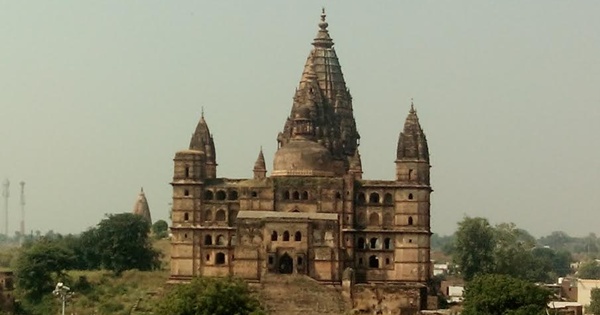
Chaturbuj Temple (incomplete arm on the left)
Ram asked the queen if she could follow the three conditions. The queen agreed.
On a Pushya Nakshatra, Rani Ganeshkuwar and Ram set out on their journey on foot. According to folklores, ballads, and legend, it took the queen around 8 years to reach Orchha from Ayodhya. As news about the queen coming to Orchha with Ram spread like wild fire, the king and the people waited keenly for them to arrive. The king himself went ahead to escort them!
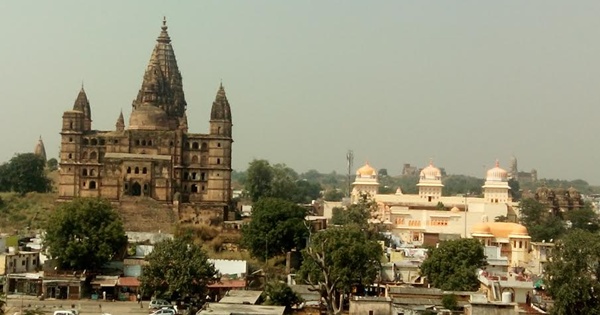
Chaturbhuj Temple and Ram Raja Temple
Madhukar Shah entrusted hundreds of the finest of architects and builders to construct a temple for Ram near the queen’s palace. The witty king kept the design of the temple corresponding to the four arms, the Chaturbhuj of Lord Vishnu, for he believed Vishnu and Ram were one in essence. While Ram would be resting inside the temple, the four arms in dome-like shapes would personify Vishnu.
Architectural features of a blend of fort, temple, and palace described the multi-storied structure. One of the arms (dome like structure at the roof) was yet to be completed when Rani Ganeshkuwar with Ram arrived in Orchha. (It is uncompleted till today!) The laborers and architects left their work and rushed to see their God.
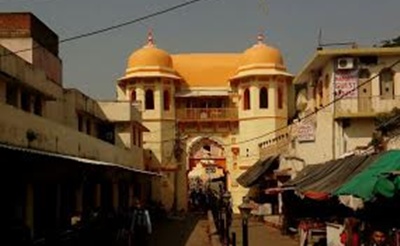
Entrance of Ram Raja Temple
Rani Ganeshkuwar entered her palace with the idol of Ram in her arms. In excitement, she forgot the second condition. She placed Ram in the kitchen of the palace and rushed to prepare sweets for her Lord. Suddenly, she realized her blunder. She rushed back and tried to move Ram’s idol, but in vain.
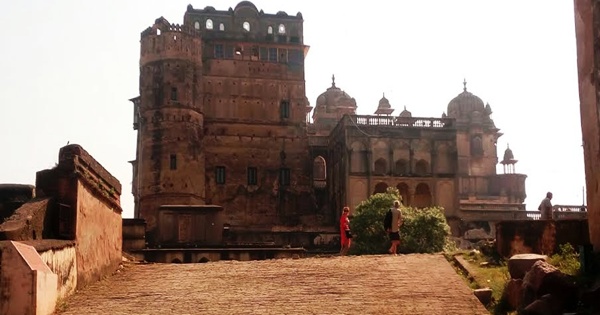
The king, queen, and the people of Orchha started worshipping Ram at the palace, addressing him as Ram Raja. The Chaturbhuj Temple remained without an idol. The palace was converted to Ram Raja Temple.
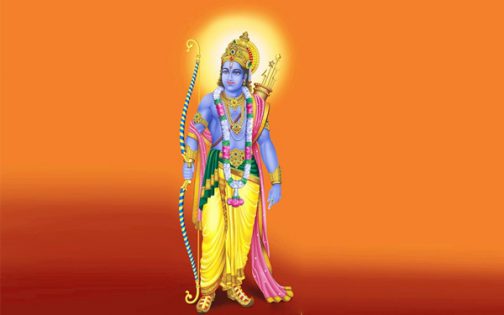
Madhukar Shah shifted his capital to Tikamgarh, a few kilometers away. Thenceforth, Shri Ram came to be known as Ram Raja. People from far and near started thronging to Orchha to catch a glimpse of the new King, Ram Raja. And the coinage ‘Ram Raja Sarkar’ has been in effect since then!
Click to read my travelogues on Maihar, Khajuraho, and Jhansi and take an informative visual tour of these three of the most visited places in India.

